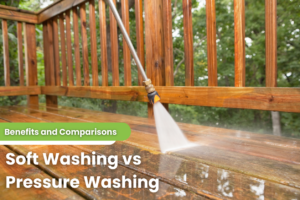When your roof starts to leak, it’s more than just a nuisance—it’s a serious threat to the structure of your home. Leaks can lead to serious damage such as instigating mold and mildew growth, rotting the building structure, and encouraging bug infestations.
Perhaps you noticed an intrusive water stain on your ceiling, or maybe recurrent heavy rain has unmasked a problem you weren’t aware existed. Whatever the circumstance, a leaking roof is never a welcome sight. The good news is (if detected early) small leaks can often be fixed easily, avoiding further damage and costly repairs. While this guide does not replace the expertise of a professional water damage and mold remediation company, it will assist you in taking immediate action when encountered with a leak, allowing you to mitigate damage before it spirals out of control.
Leak Detection: Identifying the Source
The first step in resolving any problem is identifying its root cause. Undoubtedly, small leaks are often difficult to spot and can often go unnoticed until they create visible damage in your ceiling or attic. Roof leaks typically present themselves in the form of water stains or spots on your ceiling and walls. However, at times, the location of the stain might not coincide directly with the roof leak. This is because water travels along the path of least resistance, often using your home’s ceiling joists and walls as its freeway, to the lowest level where it accumulates and finally shows up on your ceiling.
Identifying Visible Sources
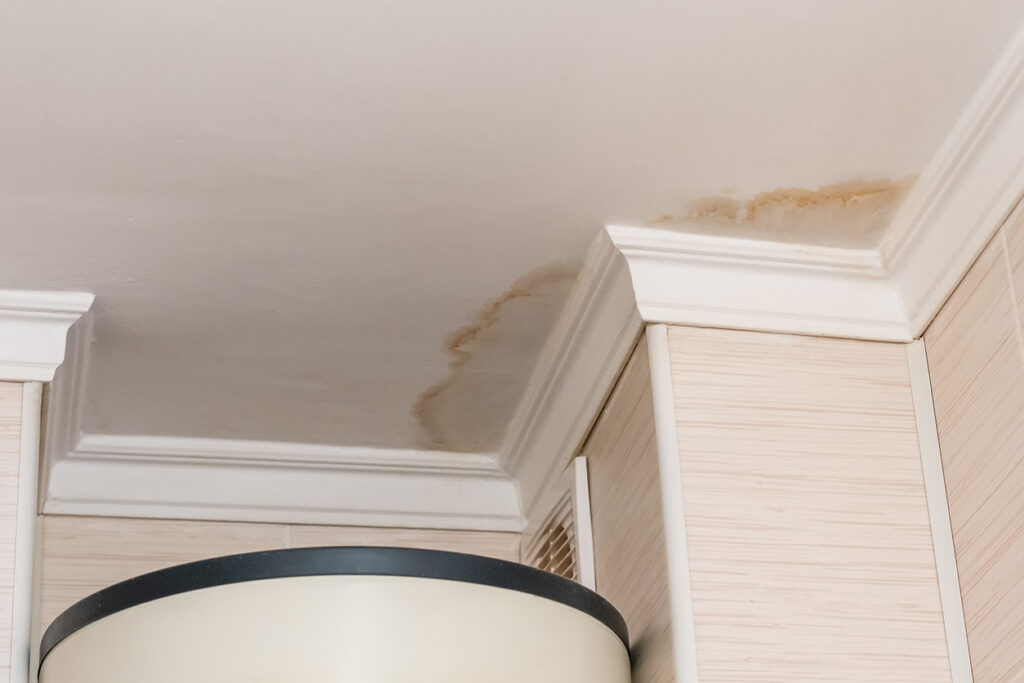
Commonly, one can spot water stains around the ceiling and the upper wall areas. However, since water tends to travel before it drips down noticeably, the visible stain may be quite a distance from the actual leak in your roof. In such cases, you might need to rely on the old saying; “water flows downhill.” Check your attic for any clues. A flashlight can be handy for this. Look for damp spots or possibly white salt deposits left by evaporated water.
Safety First
Attics often have a thin sheet of plywood known as the “subfloor” laid atop ceiling joists, providing a platform to walk on. Make sure to only step on the stable framing pieces or the subfloor, never the insulation or the topside of the ceiling below.
The Water Test
In cases where the leak source isn’t readily apparent, you may need to enlist a helper. While you stay in the attic, let your helper spray the different areas from on top of your roof exterior using a water hose. Start from the bottom and work your way up the roof. You can then look out for any trickling water inside to help identify the source. Be sure to communicate effectively with your helper to avoid causing water damage to the hose.
Never forget that roof work is inherently dangerous. If it rains heavily, or the roof is icy or steep, it might be best to call professionals such as Rescue Clean 911 and avoid the safety risks. Moreover, if the leak proves elusive, locating it may require removing shingles or extensive roof probing done best by a professional roofer.
Temporary Solutions for a Leaking Roof
Having identified the source of the leak in your roof, the next step involves temporary solutions to control the situation until a more permanent fix can be obtained. Addressing the problem with a temporary fix is like applying a band-aid—it keeps water out but isn’t a long-term solution.
Gathering Necessary Materials
To begin the process, you will need a few essential supplies, many of which you probably have around your house, or you can readily find at your local hardware store. You will need a putty knife, duct tape, a temporary roof patch, and roofing tar or roof sealant.
Applying a Temporary Patch
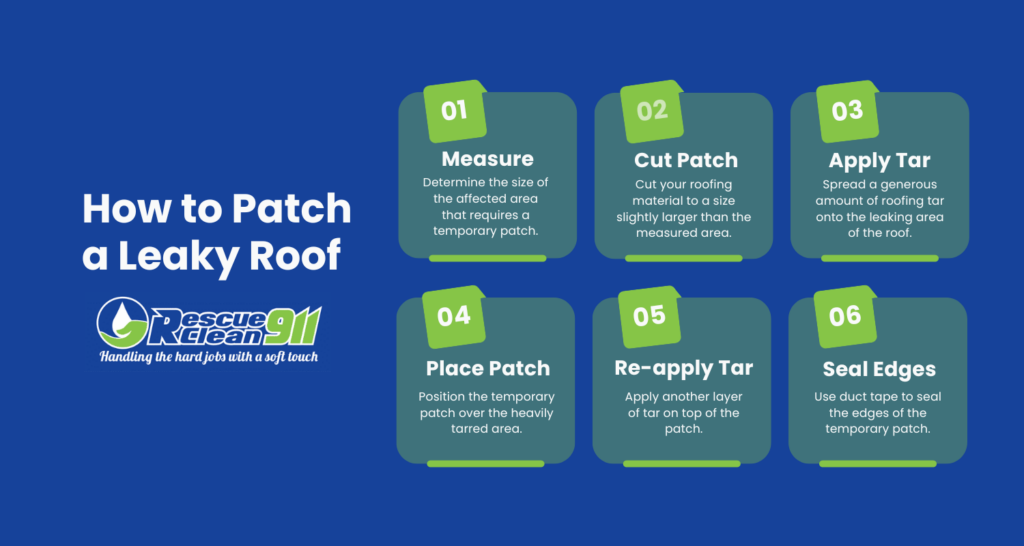
To apply a temporary patch:
- Measure the size of the leak: Use a measuring tape to determine the size of the affected area that requires a temporary patch.
- Cut an appropriate size patch: Cut your roofing material to a size slightly larger than the measured area.
- Apply roofing tar: With your putty knife, spread a generous amount of roofing tar onto the leaking area of the roof.
- Place the patch over the tar: Next, position the temporary patch over the heavily tarred area.
- Add a second layer of tar: Then, apply another layer of tar on top of the patch.
- Seal edges: Use duct tape to seal the edges of the temporary patch.
Remember, the tarring process can be a bit messy, so make sure to keep some rags close to wipe off the excess tar from your putty knife and other surfaces.
Using a Plastic Roof Covering
In situations where you have larger leak areas, you can utilize a plastic roof covering as a temporary fix. You can secure it over the leak using 2×4 wood strips nailed through the plastic and into the roof.
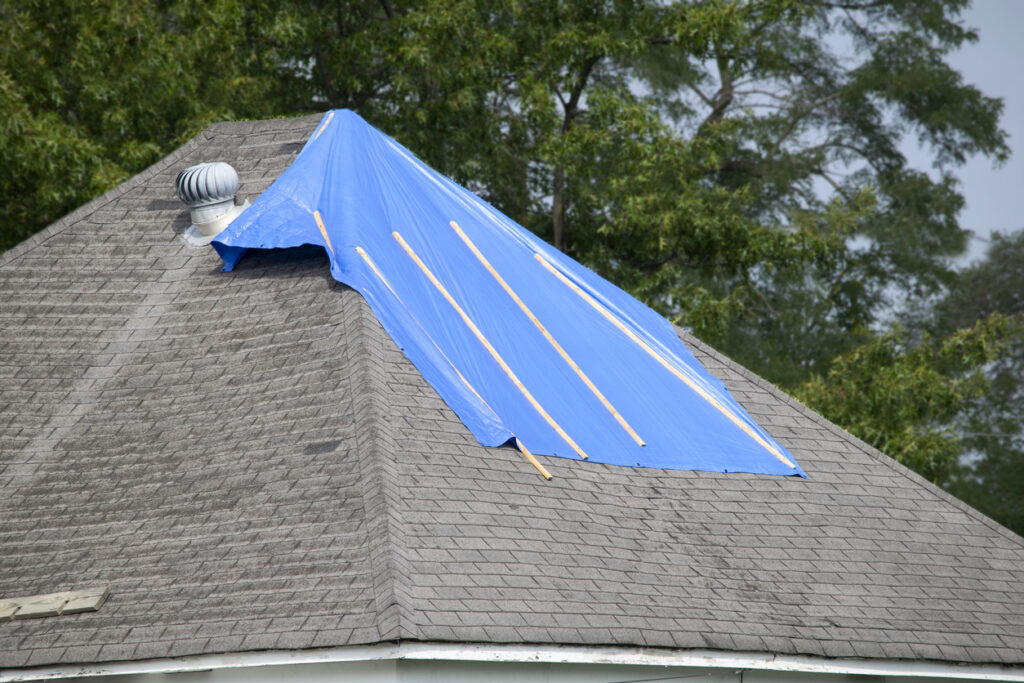
However, be aware that applying a tarp or plastic roof covering is an extremely temporary solution and is best used when dealing with a leak during long-lasting rain or wet conditions. This method doesn’t repair the leak, but simply deflects the water, providing you more time before getting a proper repair.
Long-Term Solutions: From Repairs to Roof Replacement
Even though temporary fixes can help in a pinch, they are by no means a permanent solution. Over time, small leaks can lead to more problems and cause extensive damage, not only to your roof but to your entire home. For this reason, having your roof inspected and repaired by professionals who will employ the appropriate long-term solutions is important.
Understanding the Roof Repair or Replacement Process
Repair or replacement involves complex procedures that require professional skills. For repair, this may mean replacing damaged or missing shingles, sealing with roof cement, or replacing parts of the roof with a new section. The application of roof cement or tar & gravel can help ensure a watertight seal.
If replacement is necessary, this means installing a whole new roof entirely, often changing the roof tiles or shingles. It’s vital to use the proper roofing materials to prevent future leaks and to endure heavy rainfall.
When to Call a Professional
All these tasks, from identifying the actual leak to procuring the materials and implementing a fix, are a lot for one person to handle. Plus, doing it wrong could result in further damage caused by standing water.
We can’t stress enough the importance of having your roof leak repaired by professionals. Trying a DIY long-term repair on a roof leak is a difficult process, and any repair error could lead to additional costs in fixing the mistakes or possibly even needing a total roof replacement.
If you’re not fully confident you can carry out the roof repair successfully and safely, or you continue to see water drip through your ceiling, that’s the cue to call a professional. Contractors such as Rescue Clean 911 offer a wealth of experience and knowledge when it comes to long-lasting roof repair and replacement.
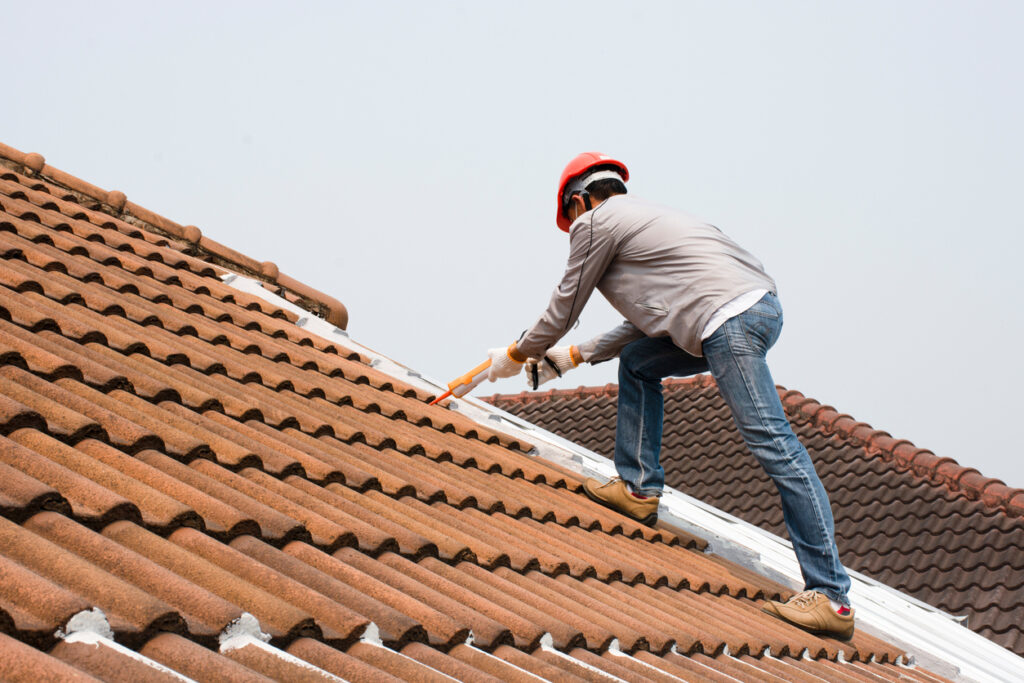
How Rescue Clean 911 Can Help With Your Leaky Roof
Roofs are a fundamental part of any home’s structural integrity, and a leaking roof can pose a significant threat, leading to further damage if not addressed promptly. Being proactive about roof leak repairs can save you a lot of money in the long run.
Understanding Risk Factors and Potential Damage
Water leaks can cause a number of issues ranging from mold and mildew to structural damage. Left unchecked, standing water can cause rotting in beams, increased moisture that boosts bug infestation, or develop into black mold which carries severe health risks. It’s worth noting that damage can also extend beyond the roof or the affected ceiling spot, damaging your walls, flooring, and sometimes even your property’s foundation. Moreover, the moisture can affect your home’s HVAC efficiency, inflating your energy bills.
Calling the Professionals at Rescue Clean 911
At Rescue Clean 911, we recognize the urgency and frustration that comes with damage to your home. Our highly trained professionals are well-versed in emergency leak detection & repair, water damage remediation, and mold removal, giving you an all-in-one solution to your problems. Give us a call today!


